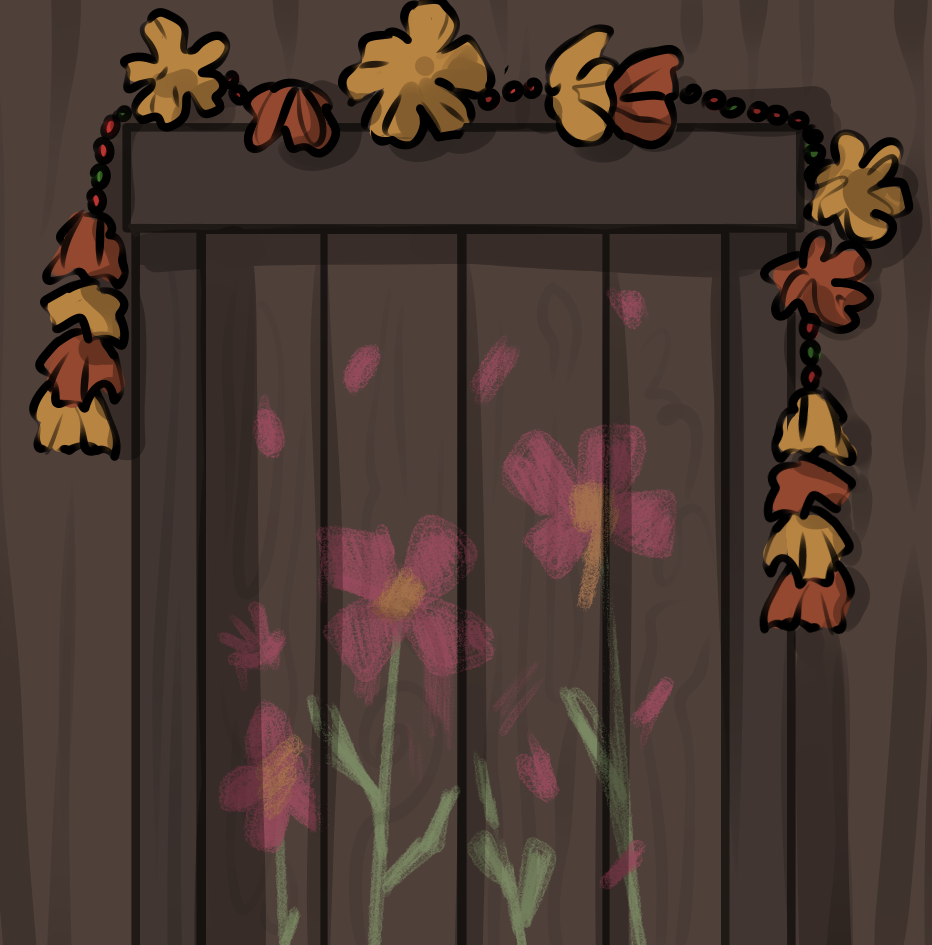Fall Fever
CW: Moderate descriptions of fatal illness and death
Fall fever (arertelmyer, as it is known in wood-elvish) is an illness caused by exposure to the poisonous spores of damppowder fungus. This fungus is sometimes found in rotikasi, a staple algae species cultivated by Aresian wood elf societies. The fungus tends to be more prolific in late autumn as the air cools, hence its name.
Signs and Symptoms
The most classic sign of fall fever is its commontongue namesake; a frightening, rapid-onset fever. Without treatment, this fever can cause various further neurological symptoms such as confusion, an impending sense of doom, psychosis, nightmares and seizure. Other notable common symptoms include vomiting, and a distinct odour on the sweat and breath. With spice-like and lactic notes, it can be described as almost "sweet".
If the victim does not succumb quickly to high fever they may exhibit a blotchy, spotted rash across the body that begins as red, but progresses through purple and becomes greenish towards the end stages of the illness. It is often thought that if a patient has a severe rash, they will not survive the illness without magical intervention.
Death is often due to brain damaged caused by hyperthermia, or failure of the kidneys or liver as they attempt to process the poison.
Causes
Damppowder can grow anywhere. It is very common in moist, cool environments with plenty of natural sugars. It is an ancient, yeast-like fungus and is a widespread, common microflora. It is even cultivated deliberately in some cases to create a "musty, powdery" flavour in some fermented beverages.
Rotikasi is taken from the lake it grows in, and is dried on specially designed racks in the sun until crisp and shelf-stable. Usually, this fungus species is usually killed off by the warm sun during the drying process. In summer, the algae only takes a few days to dry entirely. During the cooler late autumn, this process can take much longer. Sun exposure is lessened, and dew and rain re-moisten the algae for long enough that the fungus is able to grow.
The fungus must reach maturity to release its spores to cause illness. The spores of the fungus produce toxic compounds that, when eaten in large quantities, become dangerous. This is much less of a threat in alcohol production, as these spores are denatured by alcohol. It is also less of a problem in the production of food such as soft cheeses, as small doses of the fungal toxins are not particularly hazardous. As rotikasi is a staple food in wood elf society, the amount ingested before the onset of symptoms tends to be much higher and more dangerous.
Other notable outbreaks of fall fever outside of algae consumption been recorded. Usually, these tend to be after festivals where large feasts are held, through large quantities of contaminated soft cheeses, or very mildly alcoholic ciders in which the alcohol content was not strong enough to eradicate the fungus. In commontongue, the illness is often called "Feasting Fever" or "Sweet-Sweat", and is typically less serious, as less of the fungal spores tend to be consumed.
Treatment
Once identified, a victim of fall fever should immediately stop ingesting the contaminated food product that has caused their illness, and begin consuming as much water as possible and safe. Once severe fever and neurological symptoms develop, it is often difficult to reverse symptoms.
Magical intervention is often highly effective, but can be taxing and costly, and can be ineffective if there are many victims in a single settlement, or if applied too late.
There are no simple antidotes for fall fever. Each alchemist or doctor seems to have their own favourite recipe, and will prepare batches as the weather begins to cool, or before large festivities. Tinctures of various antipyretic and supportive ingredients are common and accessible treatment options. Altum bark is an effective soothing, antipyretic agent that is a common go-to ingredient. Salts and minerals for balancing hydration and honey water are effective supportive therapy.
Prevention
Before the cause of fall fever was known, there were many superstitions surrounding its origin. Because it often blew in with the chill of winter, it was sometimes thought to be a curse by winter fey. To ward the fever-ridden fey away, households would place chains of flowers, either fresh or made of paper or cloth, across their doorframe. This was thought to trick the fey into thinking it was still spring. Sometimes, children would be tasked with drawing flowers on doors with chalk, or encouraged to draw scary images of their parents wielding shields and swords to ward off the evil fey (at the added benefit of keeping them occupied a while).
Since identifying the cause of fall fever, its prevalence has greatly decreased. Most algae farmers do all they can to have their crops harvested while the weather is still warm, and the illness is more common in years with little food where towns are forced to stretch their harvests later in the year.
Soaking the algae in high-proof alcohol overnight before cooking is an effective way of destroying the spores. Even scrubbing the dried algae with a coarse brush before cooking can remove a large amount of potential spores. Both of these tactics are commonly employed later in the season. However, but some particular meals require the freshly dried algae as a textural component or as a thickener. Alcohol also interferes with the delicate flavour and texture of the algae. For these reasons, these processes are sometimes skipped.






Watch me get Feasting Fever from eating too much cheeseeeeee!